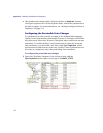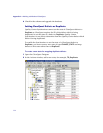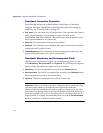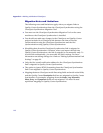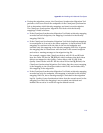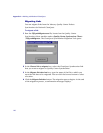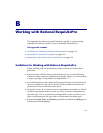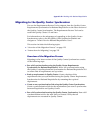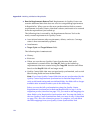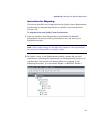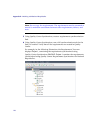Appendix A • Working with Rational ClearQuest
119
➤ During the migration process, the ClearQuest Synchronizer Migration Tool
performs a full scan on both the endpoints of the ClearQuest Synchronizer
link to determine which identity mappings are found on each endpoint.
The ClearQuest Synchronizer Migration Tool deals with the identity
mappings it finds as follows:
➤ If the ClearQuest Synchronizer Migration Tool finds an identity mapping
recorded on both endpoints, the mapping is included in the identity
mapping XML file.
➤ If the ClearQuest Synchronizer Migration Tool finds duplicate mappings
in an endpoint to a record in the other endpoint, it checks which of the
mappings is consistent with the data in the second endpoint and
includes only this mapping in the identity mapping XML file. It ignores
the mapping that is inconsistent with the data in the second endpoint
and writes a warning message to the migration log file.
For example, suppose that ClearQuest defects with ID 10 and 20 both
have the value 100 for the TD_ID field, which indicates that both these
defects are mapped to the Quality Center defect with ID 100. If the
Quality Center defect with ID 100 has value 20 for the CQ_ID field, the
ClearQuest Synchronizer Migration Tool infers that the correct mapping
is the mapping to the ClearQuest defect with ID 20, and includes only
this mapping in the migration.
➤ If the ClearQuest Synchronizer Migration Tool finds an identity mapping
recorded on only one endpoint, the mapping is included in the identity
mapping XML file, but a warning message is included in the migration
log file. Quality Center Synchronizer infers that the second record in the
mapping (on which the mapping is not recorded) was deleted and
handles the record as it would for regular deleted records.




